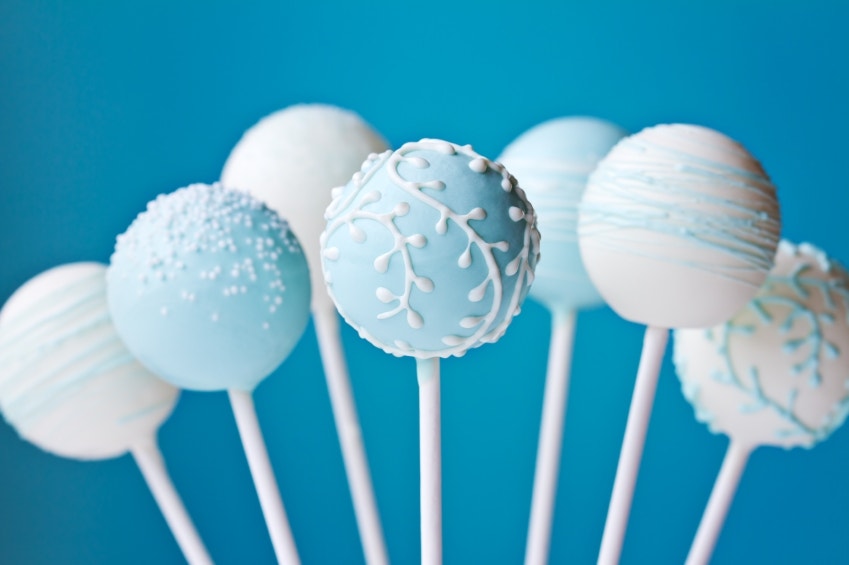
By: Mandy Oakland
There aren’t many compliments to pay processed food, but even we’ll admit: The stuff sure can be colorful. Give the food industry a dull block of ice, and voila! They’ll give you back an azure popsicle.
Unfortunately, a blockbuster new study published in the journal Food and Chemical Toxicology finds that blue dye used in edible products might be doing more to our bodies than we thought.
What Do Doctors Really Eat?

The research team, out of the Slovak University of Technology, studied two blue dyes, Patent Blue and Brilliant Blue. The former is banned from food products in the United States, but Brilliant Blue (also known as FD&C Blue No. 1) is used in food, textiles, leathers, and cosmetics in several countries including the U.S.
“[Brilliant Blue] is one of the most commonly used blue dyes,” says study co-author Jarmila Hojerová, an associate professor at the Slovak University of Technology and president of the Slovak Society of Cosmetology.
So it must be safe, right?
Experts thought so, but Hojerová and her colleagues have shown that the dyes can actually enter the bloodstream via the skin or through the digestive tract. That’s a major surprise, because it was believed that the skin blocked the dye from seeping into the body, and that ingested dyes were destroyed by the gastrointestinal system.
The team reached their conclusions by studying pig tongues coated with human saliva: Brilliant Blue and Patent Blue dye were placed on the tongues for 20 minutes, in an effort to mimic licking a lollipop. One day later, the team found that both dyes had actually been absorbed through the tongue and into the bloodstream, with Patent Blue penetrating to a greater extent.
The Health Benefits of Reading Food Labels

The finding is troubling because several studies show that these dyes might inhibit cell respiration, Hojerová says.
“If the process of creating energy and respiration does not take place properly, there are many failures,” she notes. Both dyes, for instance, have been linked to ADHD, allergies, and asthma. In 2003, when Brilliant Blue was used as a dye in feeding tubes, the FDA issued a public health advisory because of side effects like blue-tinged skin, urine, and feces, as well as hypotension and death.
In particular, the team found, the blue dyes can seep into the bloodstream when the skin’s barrier is impaired, like after shaving, or when the dyes are exposed to the mucous membrane of the tongue. They recommend that the dyes be banned in hard candies and certain cosmetic products to reduce consumer risk.
Of course, more research is required to further investigate the blue dye brouhaha. And the International Association of Color Manufacturers, who disagree with the study findings, note in a press release that the amount of dye permeating the skin is negligible when compared to safety limits.
Concerned about synthetic dyes? We don’t blame you. Here, three quick tips to cut your exposure:
Choose clean cosmetics. Ditch the shaving cream, facial cleanser, and anything else containing dye in your medicine cabinet, especially because blue dye can sneak in through damaged skin. (Wondering what to replace it with? Coconut oil can solve all of the above, and more
 .)
.)Read your labels. Artificial dyes appear on all kinds of labels, from cosmetics and food to medication. Watch out for these: Blue 1, Blue 2, Citrus Red, Green 3, Orange B, Red 3, Red 40, Yellow 5, and Yellow 6.
Nosh naturally. To add some visual zing to your food, reach into your spice cabinet instead of reaching for packaged products. Try bright pink beetroot, yellow turmeric, and golden paprika extract. (Stick with organics when you can, especially when buying these 5 Pesticide-Packed Foods
 .)
.)Read more: http://www.foxnews.com/health/2013/01/16/new-fear-about-food-dyes/?intcmp=HPBucket#ixzz2IJIbSbg2




0 comments
Post a Comment
I will like to hear your comments. Please leave a comment below